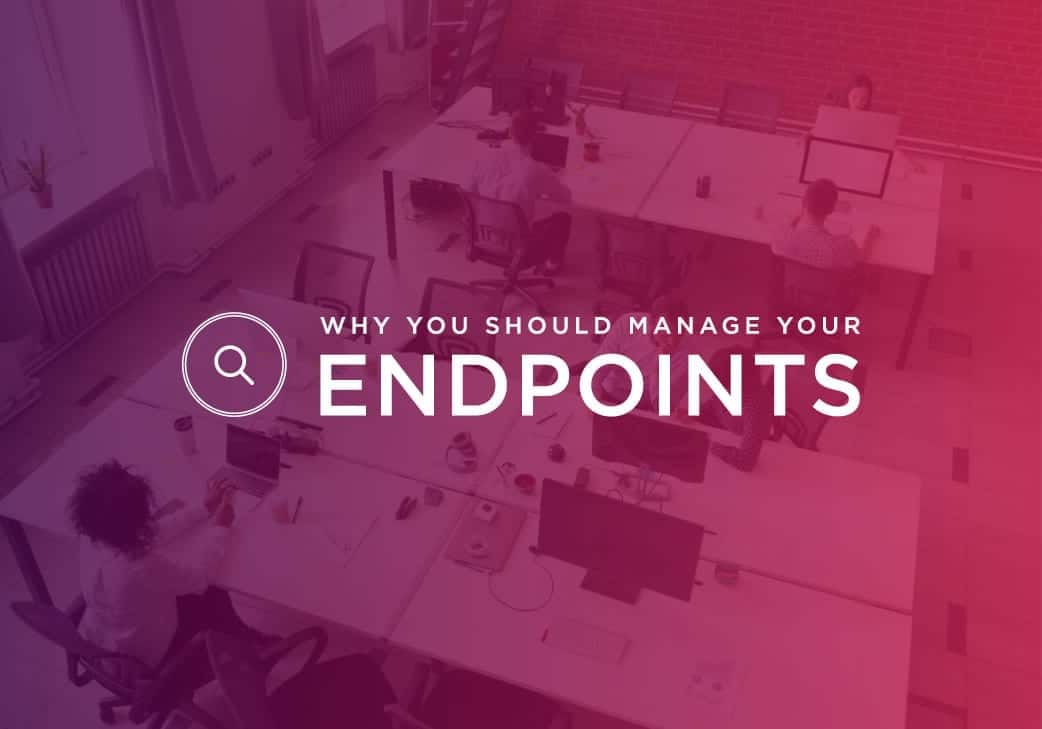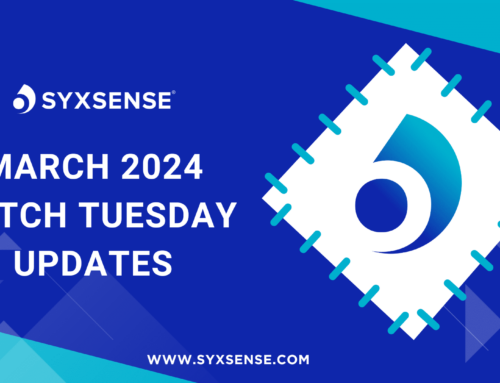
Why You Need to Manage Your Endpoints
Endpoint Management is More Critical than Ever
Not every security or IT team has a confident endpoint management strategy. A recent survey of 1,000 IT professionals found that, while 88 percent of respondents acknowledged the importance of endpoint management, nearly a third didn’t know how many endpoint devices existed within their organization.
An endpoint is simply an Internet-capable hardware device on a TCP/IP network. The term can refer to desktop computers, laptops, smart phones, tablets, thin clients, printers, or other specialized hardware, such POS terminals, smart meters, AC control systems, thermometers, and the like. The connection of these devices to corporate networks creates attack paths for security threats. It stands to reason, then, that endpoint security is imperative today for business of all sizes.
EPP vs. EDR Solutions
So, how can IT and security teams go about this? It starts with the overall concept of endpoint management: the ability to centrally discover, provision, deploy, update, and troubleshoot endpoint devices within an organization.
Such security tends to be split into two categories—albeit categories that are converging: Endpoint Protection Platforms (EPP) and Endpoint Detection & Response (EDR).
EPP is a solution deployed on endpoint devices to prevent file-based malware attacks, detect malicious activity, and provide the investigation and remediation capabilities needed to respond to dynamic security incidents and alerts.
According to Cybrary, EPP is designed to detect and block threats at the device level. To achieve this, EPP tools contain other security solutions such as:
- Antivirus
- Anti-malware
- Data encryption
- Personal firewalls
- Intrusion prevention (IPS)
- Data loss prevention (DLP)
Traditional EPP solutions are preventative by nature, and typically use a signature-based approach to identify threats. The latest EPP solutions have, however, evolved to utilize a broader range of detection techniques.
Antivirus Software Isn’t Enough
On the other hand, says Cybrary, “EDR tools are designed to monitor and record activity on endpoints, detect suspicious behavior, security risks, and respond to internal and external threats. You can use EDR solutions to track, monitor, and analyze data on endpoints to enhance the fortification of your environment.”
The article goes on to explain that EDR tools do not replace traditional tools such as antivirus and firewalls but, instead, work with them to provide enhanced security capabilities. Since these tools protect endpoints, they can be considered a part of a broader endpoint management concept.
“In other words,” according to Cybrary, “antivirus software only protects end-user devices while EDR provides network security by authenticating log-ins, monitoring network activities, and deploying updates.”
While the capabilities of EDR solutions can vary, they all share the same primary purpose; alerting the user of suspicious activity and investigating threats in real-time to study the root of the attack and stop it.
It might seem like the distinction between EPP and EDR is straightforward, but it is not always that simple. Traditionally, EPP is thought of as a first-line defense mechanism, effective at blocking known threats. EDR, on the other hand, is seen as the next layer of security, providing additional tools to detect threats, analyze intrusions, and respond to attacks.
The Benefits of EDR Solutions
EDR solutions tend to have four primary competencies: detect security incidents; contain the incident at the endpoint so network traffic or process execution can be remotely controlled; investigate security incidents; and remediate endpoints to a pre-infection state. Innovation, in the form of artificial intelligence (AI), allows EDR solutions to predict threats before they occur, in addition to the four competencies focused on detecting and eliminating threats.
EDR was initially positioned as a solution for large organizations with dedicated cybersecurity centers that can use the inputs provided by EDR to fight intrusion to their network. Now there is a growing acceptance that EDR capabilities are a necessity for all organizations of all sizes.
Of late, according to Cybrary, EDR providers have begun to incorporate aspects of EPPs into their products, and EPP providers to integrate basic EDR functionality in their solutions as well. Some companies are even now offering a more holistic security solution that combines EDR security and EPP security tools to provide both active and passive endpoint protection.
How Syxsense Can Help
Today, organizations have realized that the two solutions complement each other. Syxsense is one of those companies. As cybersecurity threats grow, there is more pressure than ever to stay ahead of the curve.
Syxsense Secure brings together endpoint management and security for greater efficiency and collaboration between IT management and security teams. Our AI-driven threat protection gets you in front of any malicious cyberattack with the power of predictive technology.
Experience the Power of Syxsense
Syxsense has created innovative and intuitive technology that sees and knows everything. Manage and secure your environment with a simple and powerful solution.







